Power Outage Preparedness - All You Need to Know
Power outages can happen when you least expect them, and they can throw your daily routine into chaos. Whether it's a sudden storm, a technical failure, or even human error, understanding how to prepare for these unexpected disruptions can make a world of difference. Imagine sitting in your living room, the lights flicker, and then—darkness. Suddenly, you're left wondering how to keep your family safe and comfortable until the power returns. This article will guide you through essential tips and strategies to ensure you're ready for any power outage that comes your way. From creating an emergency kit to staying informed, let's dive into the nitty-gritty of power outage preparedness!
Power outages can occur for a myriad of reasons, and being aware of these can help you prepare better. Severe weather, like thunderstorms or heavy snow, can knock out power lines. Equipment failure might occur due to aging infrastructure or unexpected malfunctions. Human error can also play a role, such as accidents during construction or maintenance work. By understanding these causes, you can develop better preparedness and response strategies. For instance, if you know a storm is coming, you can proactively gather supplies and secure your home, minimizing the stress and uncertainty of a blackout.
An emergency kit is your lifeline during a power outage. It’s crucial for surviving not just the immediate loss of electricity, but also for ensuring safety and comfort during extended outages. Think of your emergency kit as a small treasure chest filled with everything you might need when the lights go out. What should you include? Well, let’s break it down into essential supplies.
When assembling your emergency kit, prioritize items that address your basic needs. Here’s a quick rundown of must-have supplies:
- Non-perishable food: Think canned goods, granola bars, and dried fruits.
- Bottled water: Aim for at least one gallon per person per day.
- Flashlights: A reliable source of light is essential.
- Batteries: Don’t forget extra batteries for your devices!
- First aid kit: Basic medical supplies can be a lifesaver.
Proper food and water storage is vital. Aim for at least a three-day supply of water and non-perishable food items that require minimal preparation. This could include canned vegetables, peanut butter, and instant oatmeal. Remember, when the power goes out, your refrigerator won’t be able to keep things cool, so focus on items that can withstand the heat of an outage.
Include tools and equipment in your emergency kit to assist in various situations during a power outage. A manual can opener, multi-tool, and portable phone charger can be incredibly useful. Think of these tools as your survival toolkit, helping you navigate the challenges that come with a blackout.
Staying informed about weather conditions and potential power outages is essential. Utilize battery-operated radios or mobile apps to receive updates and alerts from local authorities. This way, you won’t be left in the dark—literally and figuratively! Knowing what’s happening outside your home can help you make informed decisions about your safety and preparedness.
During a power outage, safety precautions are crucial to prevent accidents. For instance, understanding how to handle situations like downed power lines and using generators safely can protect you and your family. It’s all about keeping your wits about you and knowing what to do in potentially dangerous situations.
If you decide to use a generator, make sure it’s placed outdoors and away from windows to avoid carbon monoxide poisoning. Follow manufacturer guidelines for safe operation and maintenance. Think of your generator as a double-edged sword—it can provide power but can also pose risks if not handled properly.
Always treat downed power lines as live and dangerous. Keep a safe distance, report the situation to authorities, and never attempt to move or touch them yourself. It’s better to be safe than sorry—your safety is paramount!
Understanding the process of power restoration can ease anxiety during outages. Familiarize yourself with local utility companies and their protocols for restoring electricity after an outage. Knowing what to expect can help you stay calm and collected when the power goes out.
Know how to contact your local utility provider to report outages and receive updates. Having this information handy can expedite the restoration process and provide peace of mind. It’s like having a lifeline to the outside world when everything else goes dark.
Many communities offer resources and support during power outages. Familiarize yourself with local shelters, food banks, and assistance programs that can provide help when needed. Remember, you’re not alone in this—your community has your back!
Q: How long can food last without power?
A: Generally, perishable foods can last about 4 hours in a refrigerator and 24-48 hours in a freezer if unopened. Non-perishable items can last much longer, so stock up on those!
Q: What should I do if I have medical devices that require power?
A: Talk to your healthcare provider about backup plans, and consider investing in a generator that can support essential medical equipment.
Q: How can I stay informed during an outage?
A: Use battery-operated radios or mobile apps to receive updates from local authorities. It’s crucial to stay in the loop!
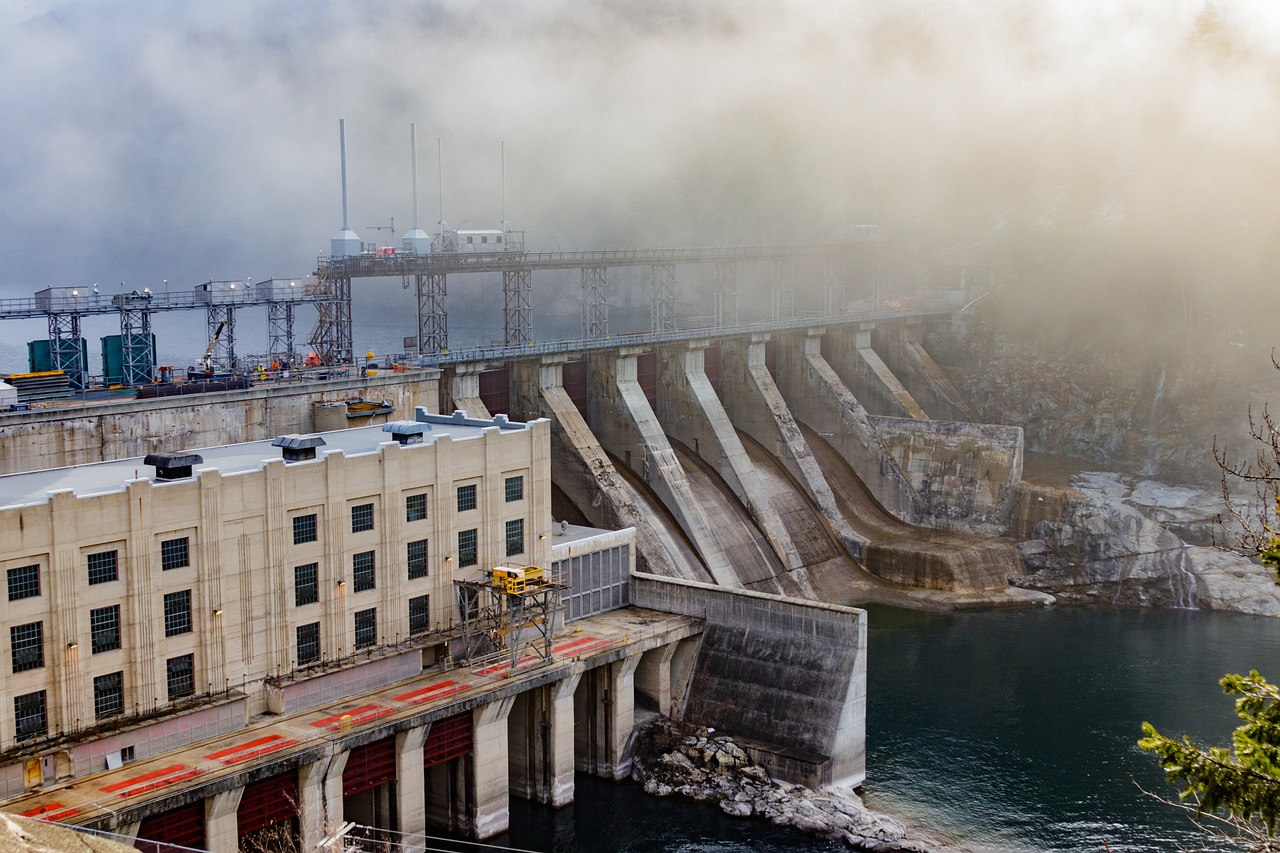
Understanding Power Outages
This article provides essential information and tips for preparing for power outages, ensuring safety and comfort during unexpected disruptions in electricity supply.
Power outages can be a real headache, can't they? Imagine planning a cozy evening at home, only to find yourself sitting in the dark, wondering when the lights will come back on. Understanding the causes of power outages is crucial for better preparedness and response strategies. These disruptions can occur due to a variety of reasons, each with its own set of challenges. Some of the most common causes include:
- Severe Weather: Storms, heavy winds, and floods can wreak havoc on power lines and equipment, leading to outages.
- Equipment Failure: Aging infrastructure or faulty equipment can fail unexpectedly, causing localized blackouts.
- Human Error: Accidents, such as construction mishaps or vehicle collisions with utility poles, can also disrupt power supply.
By understanding these factors, you can take proactive measures to mitigate the impact of a power outage. For instance, if you know that severe weather is on the horizon, you can prepare your home and gather supplies in advance. It’s like preparing for a storm; you wouldn't wait until the rain starts to gather your umbrella, right?
Moreover, it's essential to stay informed about your local area's power grid and its vulnerabilities. Some regions are more prone to outages than others, often due to geographical or infrastructural reasons. Knowing your area's history with power outages can help you anticipate and prepare for potential future events.
Additionally, consider the seasonal factors that might increase the likelihood of outages. For instance, summer heatwaves can lead to increased energy consumption and strain on the power grid, while winter storms can bring down trees and power lines. By keeping an eye on these trends, you can better equip yourself and your family for any eventuality.
In summary, understanding power outages is about more than just knowing they happen; it’s about being proactive and prepared. The more you know, the better you can respond. And who knows? With a little preparation, you might just find yourself enjoying the unexpected downtime, perhaps with a good book by candlelight!
An emergency kit is crucial for surviving a power outage. It should include essential supplies like food, water, medications, and tools to ensure safety and comfort during extended outages.
When assembling an emergency kit, prioritize items such as non-perishable food, bottled water, flashlights, batteries, and a first aid kit to address basic needs during a power outage.
Proper food and water storage is vital. Aim for at least a three-day supply of water and non-perishable food items that require minimal preparation and can sustain your family.
Include tools and equipment in your emergency kit, such as a manual can opener, multi-tool, and portable phone charger, to assist in various situations during a power outage.
Staying informed about weather conditions and power outages is essential. Utilize battery-operated radios or mobile apps to receive updates and alerts from local authorities during emergencies.
During a power outage, safety precautions are crucial to prevent accidents. Understanding how to handle situations like downed power lines and using generators safely can protect you and your family.
If using a generator, ensure it is placed outdoors and away from windows to avoid carbon monoxide poisoning. Follow manufacturer guidelines for safe operation and maintenance.
Always treat downed power lines as live and dangerous. Keep a safe distance, report the situation to authorities, and never attempt to move or touch them yourself.
Understanding the process of power restoration can ease anxiety during outages. Familiarize yourself with local utility companies and their protocols for restoring electricity after an outage.
Know how to contact your local utility provider to report outages and receive updates. Having this information handy can expedite the restoration process and provide peace of mind.
Many communities offer resources and support during power outages. Familiarize yourself with local shelters, food banks, and assistance programs that can provide help when needed.
Q: What should I do first during a power outage?
A: Stay calm and check your surroundings. Ensure that candles or flashlights are ready and avoid opening the refrigerator to keep food cold.
Q: How long can food last in the refrigerator during an outage?
A: Generally, food can last about 4 hours in a refrigerator and 48 hours in a full freezer if unopened.
Q: How can I stay updated during a power outage?
A: Use a battery-operated radio or your mobile device to access news updates and alerts from local authorities.

Creating an Emergency Kit
When it comes to preparing for a power outage, one of the most critical steps is . Think of it as your lifeline during those unexpected moments when the lights go out. The comfort and safety of your family can depend on how well you prepare. An emergency kit should be tailored to your specific needs, but there are some essential supplies that everyone should consider including. Imagine being caught in the dark, with no way to cook or communicate; having the right supplies can turn a stressful situation into a manageable one.
Your emergency kit should primarily focus on three key areas: food, water, and medical supplies. But there’s so much more to it than just stuffing a backpack with snacks and a flashlight. It’s about creating a comprehensive plan that ensures you have everything necessary to stay safe and comfortable. For instance, you should aim to have at least a three-day supply of water—about one gallon per person per day. This is crucial, as hydration is one of the first concerns in any emergency.
When it comes to food, think about items that are non-perishable and require minimal preparation. Canned goods, dried fruits, and energy bars are great options. Here’s a quick breakdown of what to include:
- Non-perishable food items (canned vegetables, beans, pasta)
- Snack foods (granola bars, nuts, dried fruits)
- Special dietary items (baby food, gluten-free products)
But that’s not all! You also need to consider tools and equipment that can make a world of difference. A manual can opener is essential if you’re relying on canned goods, and a multi-tool can serve various functions, from opening bottles to making minor repairs. Don’t forget a portable phone charger—keeping your devices powered can be a game-changer for staying connected and informed during an outage.
In addition to food and tools, having a well-stocked first aid kit is vital. This should include basic medical supplies such as bandages, antiseptics, and any necessary medications. It’s also wise to include a copy of important documents, like identification and medical records, in a waterproof bag. This way, you’ll be prepared for any situation that arises.
Lastly, consider adding some comfort items to your kit. A few blankets, some books or games, and maybe even a deck of cards can help pass the time and keep spirits high when the power is out. Remember, it’s not just about survival; it’s about maintaining a sense of normalcy in an abnormal situation.
So, as you start to assemble your emergency kit, think of it as your family's safety net. It’s not just a collection of supplies but a carefully curated selection of items that can help you weather the storm—literally and figuratively. By taking the time to prepare now, you’re ensuring that when the unexpected happens, you’re ready to face it with confidence and calm.

Essential Supplies to Include
When it comes to preparing for a power outage, having an emergency kit ready is your best line of defense. Think of it like packing for a camping trip, but instead of enjoying nature, you're hunkering down at home. You want to make sure you have all the essentials that can keep you and your family safe and comfortable during those unexpected blackouts. It's not just about having a flashlight and some snacks; it's about being thoroughly prepared for anything that might come your way.
Start by focusing on non-perishable food items. You want food that doesn’t require cooking or refrigeration, because, let’s face it, if the power’s out, cooking might not be an option. Consider items like canned goods, dried fruits, nuts, and energy bars. These are not only easy to store but also provide the necessary nutrition to keep your energy levels up. Aim for at least a three-day supply, and don’t forget to include food that your family enjoys. After all, who wants to eat something they don’t like when the lights go out?
Next on the list is bottled water. Water is essential, and during a power outage, you might not have access to clean water. The general recommendation is to have at least one gallon of water per person per day for at least three days. This means you should be aiming for a minimum of 12 gallons for a family of four. It’s also wise to consider additional water for pets and personal hygiene. Store the water in a cool, dark place to keep it fresh.
Now, let’s talk about lighting. A reliable flashlight is a must-have. You don’t want to be fumbling around in the dark, right? Get a couple of flashlights and make sure to stock up on extra batteries. If you prefer a more ambient light source, consider candles or lanterns, but always remember to keep them away from anything flammable and never leave them unattended. It’s all about creating a safe environment.
Don’t overlook the importance of a first aid kit. Accidents happen, and having a well-stocked first aid kit can be a lifesaver. Make sure it includes adhesive bandages, antiseptic wipes, gauze, and any personal medications you or your family members might need. It’s also a good idea to include a manual on basic first aid procedures, just in case you need a refresher.
Finally, think about some tools and equipment that can make your life easier during a power outage. A manual can opener is essential if you're relying on canned goods. A multi-tool can come in handy for various tasks, and a portable phone charger will help keep your devices powered up so you can stay connected. Also, consider having a battery-operated radio to stay updated on news and weather conditions.
In summary, preparing for a power outage involves gathering a variety of essential supplies that can help you navigate through the situation with ease. By ensuring you have food, water, lighting, medical supplies, and tools, you can turn a potentially stressful experience into a manageable one. Remember, the key is to be proactive and think ahead. You never know when the next power outage might hit!
- How long can food last without refrigeration? Non-perishable food items can last for months or even years without refrigeration, as long as they are stored properly.
- What should I do if I run out of water during an outage? If you run out of bottled water, avoid drinking from taps or faucets unless you are sure the water is safe. You can also fill bathtubs or sinks with water before an outage for sanitation and cooking needs.
- Is it safe to use candles during a power outage? While candles can provide light, they should be used with caution. Always keep them away from flammable materials and never leave them unattended.
- How can I stay informed during a power outage? Battery-operated radios and mobile apps are great ways to receive updates from local authorities. Make sure to have these ready in your emergency kit.
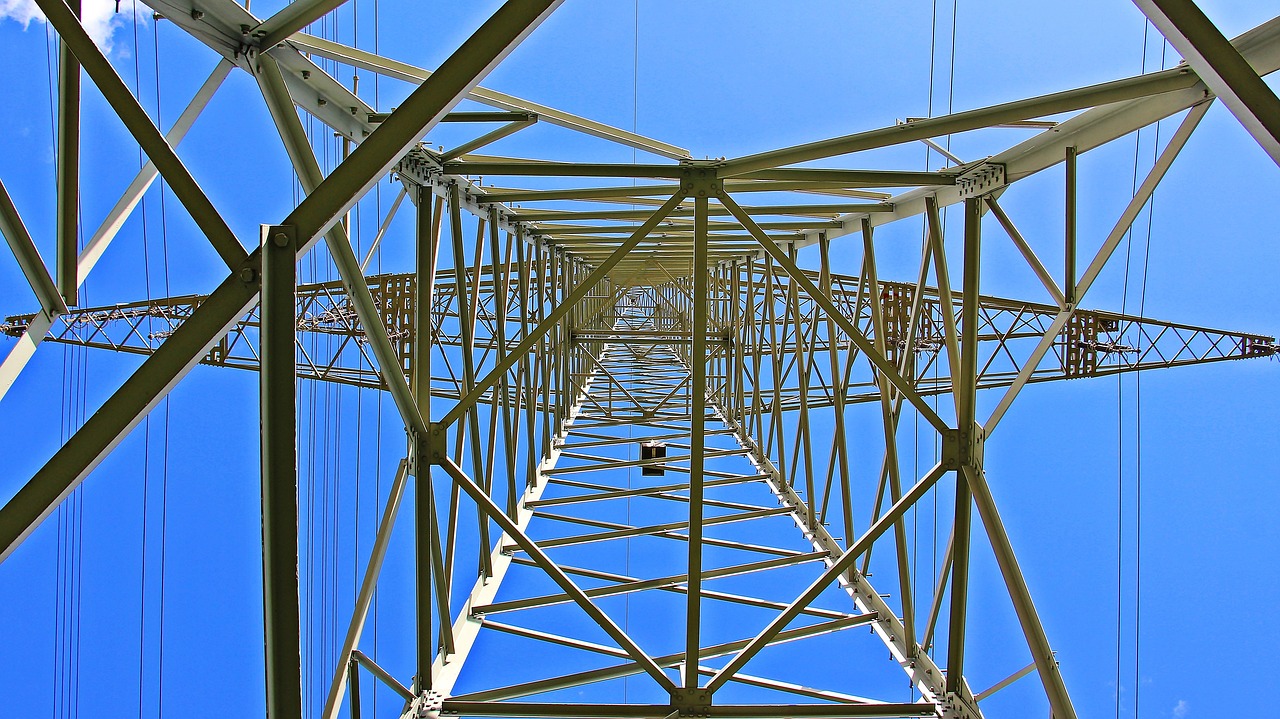
Food and Water Storage
When it comes to preparing for a power outage, are two of the most critical aspects you need to consider. Imagine being stuck at home without electricity, and the only thing you have is a half-eaten bag of chips and a bottle of soda. Not exactly the survival scenario you want, right? To avoid such a predicament, aim to have at least a three-day supply of water and non-perishable food items that require minimal preparation. This way, you can ensure that you and your family remain nourished and hydrated during an outage.
For water, the general guideline is to store one gallon per person per day. This means that for a family of four, you should have at least twelve gallons of water stored away. It’s a good idea to use sealed containers or commercially bottled water to keep things fresh. Remember to check expiration dates regularly and rotate your supplies to prevent any waste. If you’re feeling adventurous, you might even consider investing in a water purification system, which can be a lifesaver if you need to source water from less-than-ideal places.
Now, let's talk about food. Non-perishable items are your best friends during a power outage. Think canned goods, dry snacks, and other foods that can be stored for long periods. Here’s a quick rundown of some food categories you might want to consider:
- Canned Vegetables and Fruits: These are not only nutritious but also easy to prepare. Just pop the can open and enjoy!
- Grains: Items like rice, pasta, and oats can be filling and have a long shelf life.
- Protein Sources: Canned beans, peanut butter, and even jerky can provide the necessary protein to keep you going.
- Snacks: Don’t forget to add some comfort food! Granola bars, nuts, and dried fruits can lift your spirits during a tough time.
In addition to food and water, consider how you’ll prepare your meals. If you have a camping stove or a portable grill, make sure to keep those handy, along with the necessary fuel. Just remember to use them outdoors to avoid any fire hazards or carbon monoxide buildup in your home.
Lastly, it’s essential to keep an eye on the storage conditions of your supplies. Store everything in a cool, dry place away from direct sunlight to prolong their shelf life. Regularly check your supplies and update them as needed to ensure that you’re always prepared for the unexpected.
Q: How often should I check my emergency supplies?
A: It's a good idea to check your emergency supplies at least every six months. This way, you can rotate out any expired items and replenish your stock.
Q: Can I store water in plastic bottles?
A: Yes, you can store water in clean plastic bottles. Just make sure they are food-grade containers and keep them in a cool, dark place.
Q: What types of food should I avoid during a power outage?
A: Avoid perishable items like dairy, meat, and any foods that require refrigeration. Stick to non-perishable goods that can last without power.

Tools and Equipment
When preparing for a power outage, having the right in your emergency kit can make all the difference. Think of your emergency kit as a toolbox for survival; each item serves a unique purpose that can help you navigate through challenging situations. First and foremost, a manual can opener is essential if you’re relying on canned goods for sustenance. Imagine being stuck with a can of beans but no way to open it—frustrating, right? This simple tool can save you from a hunger crisis.
Next up, consider including a multi-tool in your kit. This handy device can function as a knife, screwdriver, and even a pair of pliers, allowing you to tackle various tasks without lugging around multiple tools. It’s like having a Swiss Army knife at your fingertips, ready to assist in any situation. Whether you need to tighten a loose screw or cut through packaging, a multi-tool is invaluable.
Another crucial piece of equipment is a portable phone charger. In our tech-driven world, staying connected is vital, especially during emergencies. A portable charger ensures that your phone remains powered, allowing you to receive updates, communicate with loved ones, or even access emergency services. After all, how would you feel if you were cut off from the outside world during a blackout?
It’s also wise to include a flashlight with extra batteries in your kit. When the lights go out, darkness can be disorienting and even scary. A reliable flashlight not only illuminates your surroundings but also provides a sense of security. Imagine wandering around your home in pitch black; having a flashlight can help you navigate safely and avoid accidents.
Lastly, don’t forget to pack a first aid kit. Accidents can happen, and having basic medical supplies on hand is essential for treating minor injuries. Your first aid kit should include items like band-aids, antiseptic wipes, and pain relievers. Think of it as your safety net; it’s better to be prepared than to scramble for help when you need it most.
In summary, the tools and equipment you include in your emergency kit can significantly enhance your safety and comfort during a power outage. By ensuring you have a manual can opener, multi-tool, portable phone charger, flashlight, and first aid kit, you’re setting yourself up for success in navigating through any unexpected disruptions. Remember, preparation is the key to staying calm and in control when the lights go out!
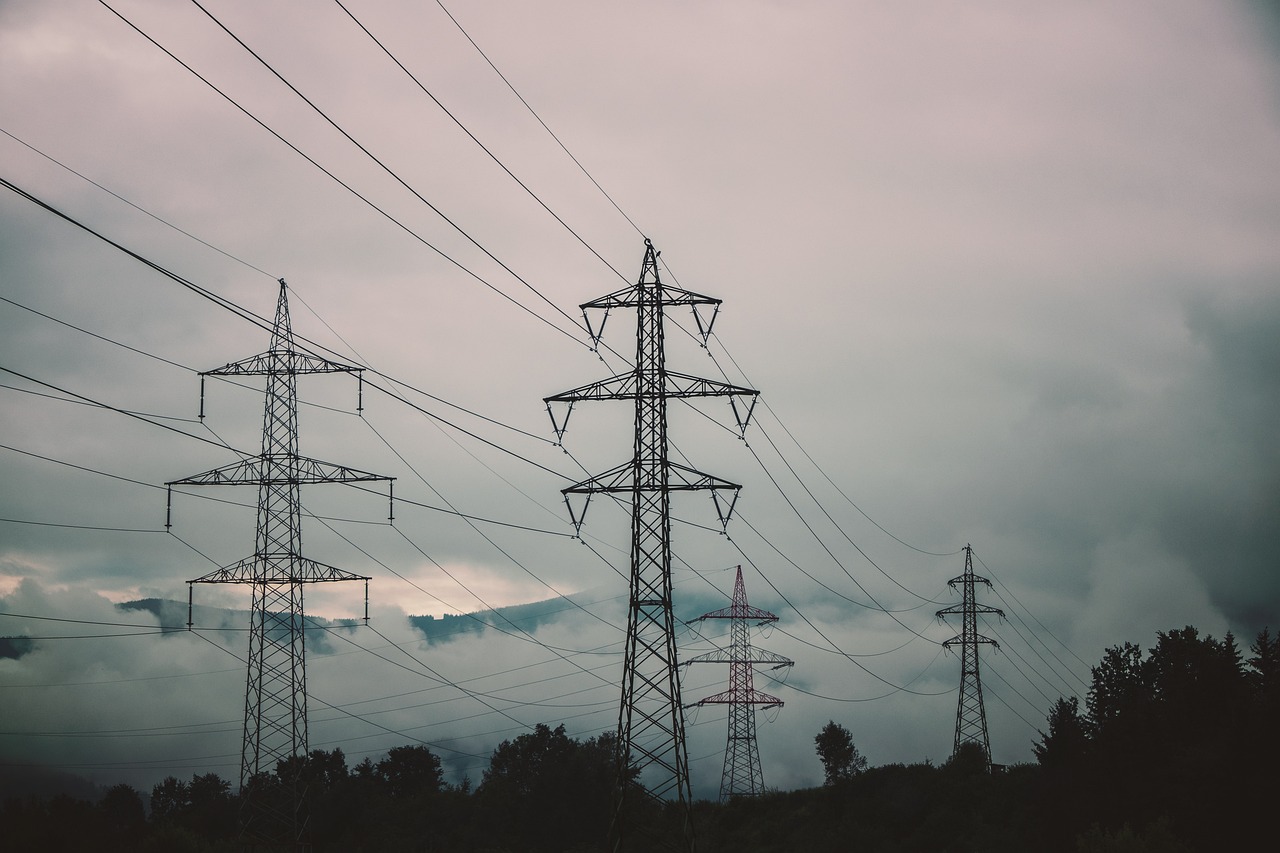
Staying Informed
In today's fast-paced world, staying informed during a power outage is more critical than ever. Imagine sitting in the dark, surrounded by uncertainty, and the only thing you have to rely on is your ability to gather information. It can be a daunting experience, but there are effective strategies to keep you connected and informed. The first step is to have a reliable source of information at your fingertips. Battery-operated radios are a fantastic option, as they can provide real-time updates on weather conditions and power restoration efforts. Alternatively, consider downloading mobile applications that can alert you to outages and provide updates from local authorities.
Another essential aspect of staying informed is knowing where to look for information. Local news stations often provide timely updates during emergencies, so having a list of these stations handy can be a lifesaver. You might even want to follow your local utility company on social media platforms. They typically post updates about outages and expected restoration times, which can help you plan your next steps. In addition, many communities have emergency management websites that offer critical information during power outages. Make it a habit to check these resources regularly, especially during severe weather seasons.
Furthermore, consider creating a communication plan with your family and friends. This plan should include how to reach each other during an outage and what information to share. For instance, if someone is in a different area, they might have access to information that you don’t. Establishing a group chat or using messaging apps can help keep everyone in the loop. In essence, staying informed is not just about receiving information; it's about ensuring that you can act on it effectively.
Lastly, remember that knowledge is power. The more you know about your local infrastructure and emergency protocols, the better prepared you'll be when the lights go out. Take the time to familiarize yourself with your community's emergency response plans and resources. This proactive approach can make a significant difference in how you and your family navigate power outages.
- How can I prepare for a power outage in advance?
Start by creating an emergency kit with essential supplies, and stay informed about local weather conditions. - What should I do if the power goes out?
Stay calm, avoid opening the refrigerator, and check your emergency kit for supplies. - How can I stay informed during an outage?
Use battery-operated radios, mobile apps, and follow local news and utility company updates. - What safety precautions should I take during a power outage?
Ensure the safe use of generators, avoid downed power lines, and use candles and flashlights cautiously.

Safety Precautions During Outages
When the lights go out, it can feel like the world has come to a standstill. Your first instinct may be to grab a flashlight and check on your loved ones, but it's crucial to remember that safety should always come first during a power outage. With the right precautions, you can protect yourself and your family from potential hazards. Think of it as preparing for a storm; you wouldn't venture out without ensuring your home is secure, right?
One of the most important safety measures involves understanding how to handle downed power lines. These lines can be incredibly dangerous, and it’s essential to treat them as if they are live wires. If you see a downed line, keep a safe distance—at least 30 feet—and never attempt to move or touch it. Instead, report the situation to local authorities immediately. It’s like seeing a wild animal in your backyard; the best course of action is to stay calm and keep your distance.
Another critical aspect of safety during a power outage is the proper use of generators. While they can be a lifesaver, they also come with risks. Generators should always be placed outdoors and away from windows to prevent carbon monoxide poisoning, which can occur even in well-ventilated areas. Make sure you are familiar with the manufacturer's guidelines for safe operation and maintenance. Think of your generator as a powerful tool—it can help you, but if misused, it can also harm you.
In addition to these precautions, it's wise to prepare your home ahead of time. Make sure that your smoke detectors and carbon monoxide alarms are functional, and keep a fire extinguisher accessible. You never know when an emergency situation might arise, and being prepared can mean the difference between a minor inconvenience and a major disaster. Consider creating a safety plan with your family, discussing what to do in various scenarios. This could include:
- Identifying a safe meeting place
- Assigning roles to each family member
- Practicing emergency communication methods
Lastly, don't forget to stay informed. Use battery-operated radios or mobile apps to receive updates from local authorities during emergencies. Knowledge is power, and being aware of the situation can help you make informed decisions. In times of uncertainty, staying connected can provide a sense of calm, like a lighthouse guiding you through a stormy night.
Q: What should I do if I encounter a downed power line?
A: Always treat downed power lines as live and dangerous. Maintain a safe distance, report the situation to authorities, and do not attempt to move or touch the lines yourself.
Q: How can I safely use a generator during a power outage?
A: Place your generator outdoors, away from windows and doors, to prevent carbon monoxide poisoning. Follow the manufacturer's guidelines for operation and maintenance to ensure safety.
Q: What items should be included in my emergency kit?
A: Your emergency kit should include non-perishable food, bottled water, flashlights, batteries, a first aid kit, and any necessary medications. It's crucial to have enough supplies to last at least three days.
Q: How can I stay informed during a power outage?
A: Use battery-operated radios or mobile apps to receive updates from local authorities. Staying informed can help you make better decisions during an outage.
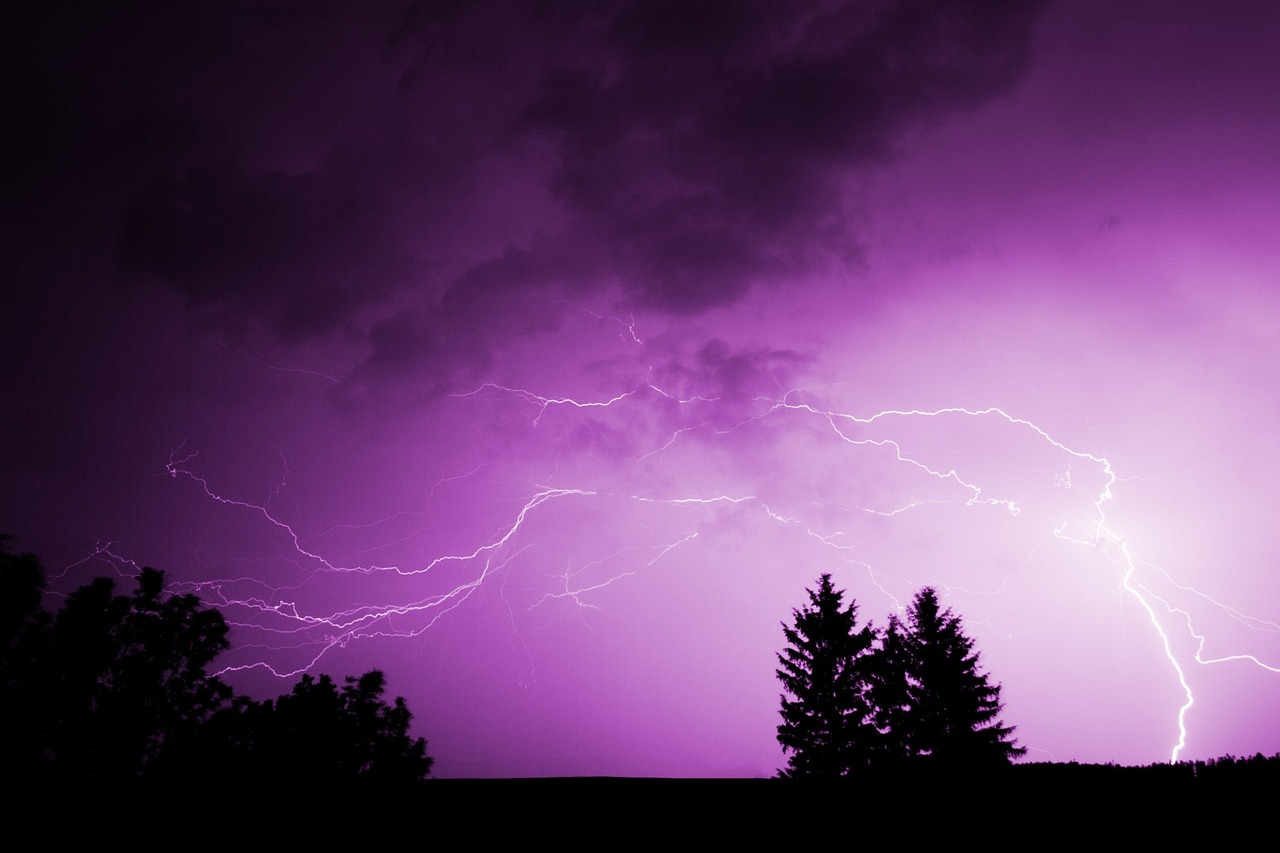
Using Generators Safely
Generators can be a lifesaver during power outages, providing you with the electricity needed to keep your home running smoothly. However, using them requires caution and knowledge to ensure safety for you and your loved ones. First and foremost, always place your generator outdoors, away from windows, doors, and vents. This precaution helps prevent the deadly buildup of carbon monoxide, a colorless and odorless gas that can quickly become lethal in enclosed spaces.
It's also crucial to follow the manufacturer’s instructions for operating your generator. Each model has specific guidelines regarding fuel types, maintenance, and load capacities. Overloading a generator can lead to overheating and damage, so it’s wise to calculate your power needs accurately. For instance, if you plan to run essential appliances like a refrigerator and lights, make sure you know their wattage requirements and choose a generator that can handle the total load comfortably.
Additionally, consider investing in a transfer switch, which allows you to connect your generator directly to your home's electrical system. This setup not only makes it easier to switch between power sources but also enhances safety by preventing backfeed, which can endanger utility workers repairing power lines. If you decide to use extension cords, ensure they are rated for the generator’s output and are in good condition to avoid electrical hazards.
Lastly, always store fuel in approved containers and in a safe area away from the generator. Fuel should never be added while the generator is running, as this can lead to spills and fires. By adhering to these safety measures, you can enjoy the benefits of your generator while minimizing risks. Remember, a little caution goes a long way in ensuring that your power outage experience is safe and manageable.
- What should I do if my generator starts to make strange noises?
Strange noises can indicate a problem. Turn off the generator immediately and consult the manual or a professional technician. - Can I use my generator indoors?
No, never use a generator indoors or in enclosed spaces due to the risk of carbon monoxide poisoning. - How often should I perform maintenance on my generator?
Regular maintenance is crucial. Check your generator’s manual for specific guidelines, but typically, you should inspect it every few months.
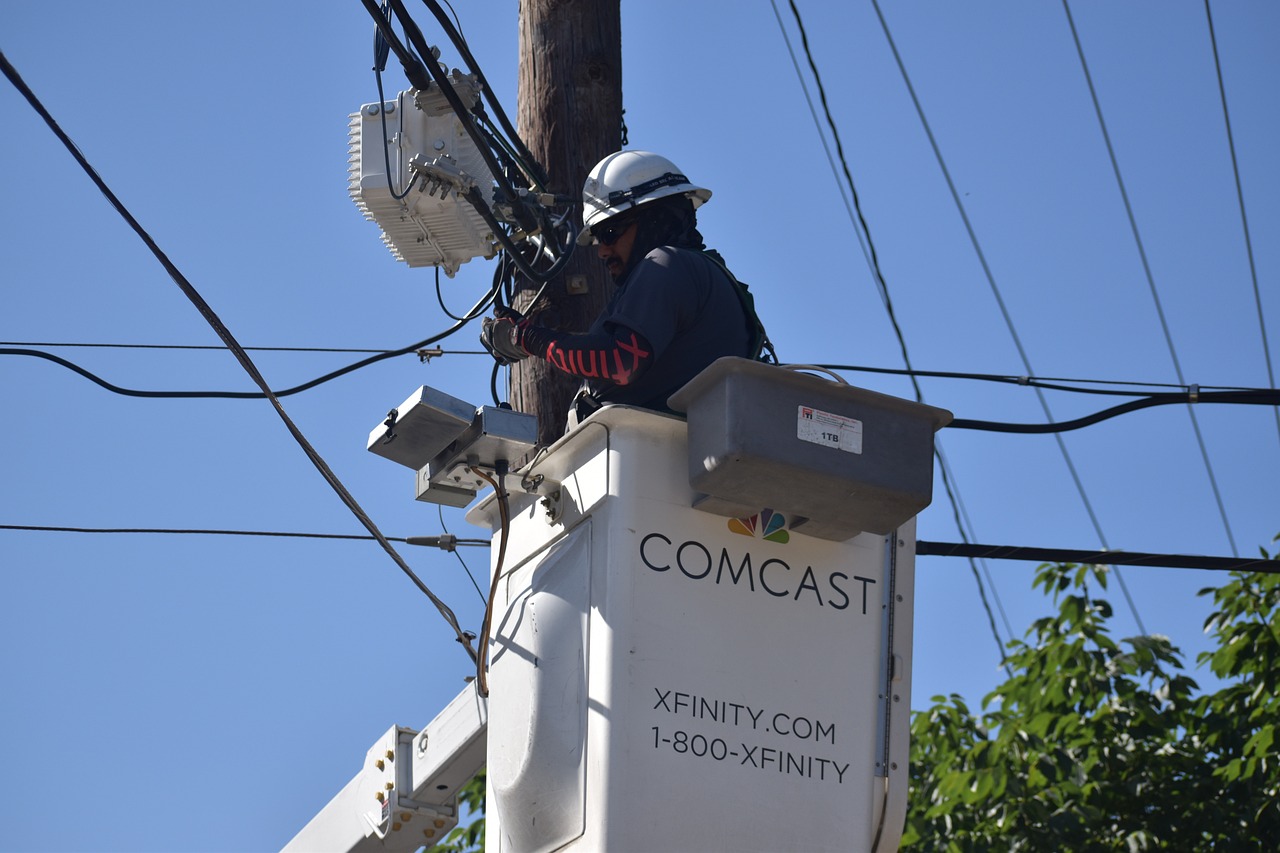
Handling Downed Power Lines
When a power outage occurs, one of the most dangerous situations you might encounter is a downed power line. These lines can be hazardous and pose serious risks, not only to your safety but also to your property. So, what should you do if you come across a downed power line? First and foremost, never approach or touch the line. Even if it looks harmless, there’s a high chance it’s still live and could cause severe injury or even death. It's crucial to treat every downed line as if it were energized.
Imagine walking through your neighborhood after a storm, and you spot a power line lying on the ground. Your instinct might be to check it out or even move it away, but that could be a fatal mistake. Instead, maintain a safe distance—at least 30 feet—and keep others away as well. If you see someone else approaching, warn them immediately. It’s better to be safe than sorry!
Once you’ve ensured your safety, the next step is to report the downed line. Use your mobile phone or a nearby landline to contact local authorities or your utility company. Provide them with clear details about the location of the line, and if possible, include any landmarks that can help emergency responders. This information is vital for them to respond quickly and effectively.
While you wait for help to arrive, it's essential to keep a watchful eye on the situation. If the downed line is sparking or causing a fire, move to a safe distance and call 911 immediately. Your safety and the safety of those around you is the most important thing. Remember, downed power lines can also create additional hazards, such as igniting nearby vegetation or structures.
In summary, handling downed power lines requires caution, quick thinking, and immediate action. Here’s a quick recap of the essential steps to follow:
- Stay away: Keep a safe distance of at least 30 feet.
- Do not touch: Treat all downed lines as live wires.
- Report: Call local authorities or your utility provider with the location details.
- Watch for hazards: If sparks or fires occur, evacuate the area and call 911.
By following these guidelines, you can help ensure your safety and the safety of others during a power outage. Remember, knowledge is power, and being prepared can make all the difference in an emergency situation.
Q: What should I do if I see a downed power line?
A: Stay at least 30 feet away and treat it as live. Report it to local authorities or your utility provider immediately.
Q: Can I touch a downed power line if it looks safe?
A: No, never touch a downed power line, regardless of its appearance. It may still be energized and dangerous.
Q: How do I report a downed power line?
A: Use your mobile phone to call your local utility company or emergency services, providing them with the exact location of the downed line.
Q: What if the downed line is causing a fire?
A: Move to a safe distance and call 911 immediately to report the fire and the downed line.
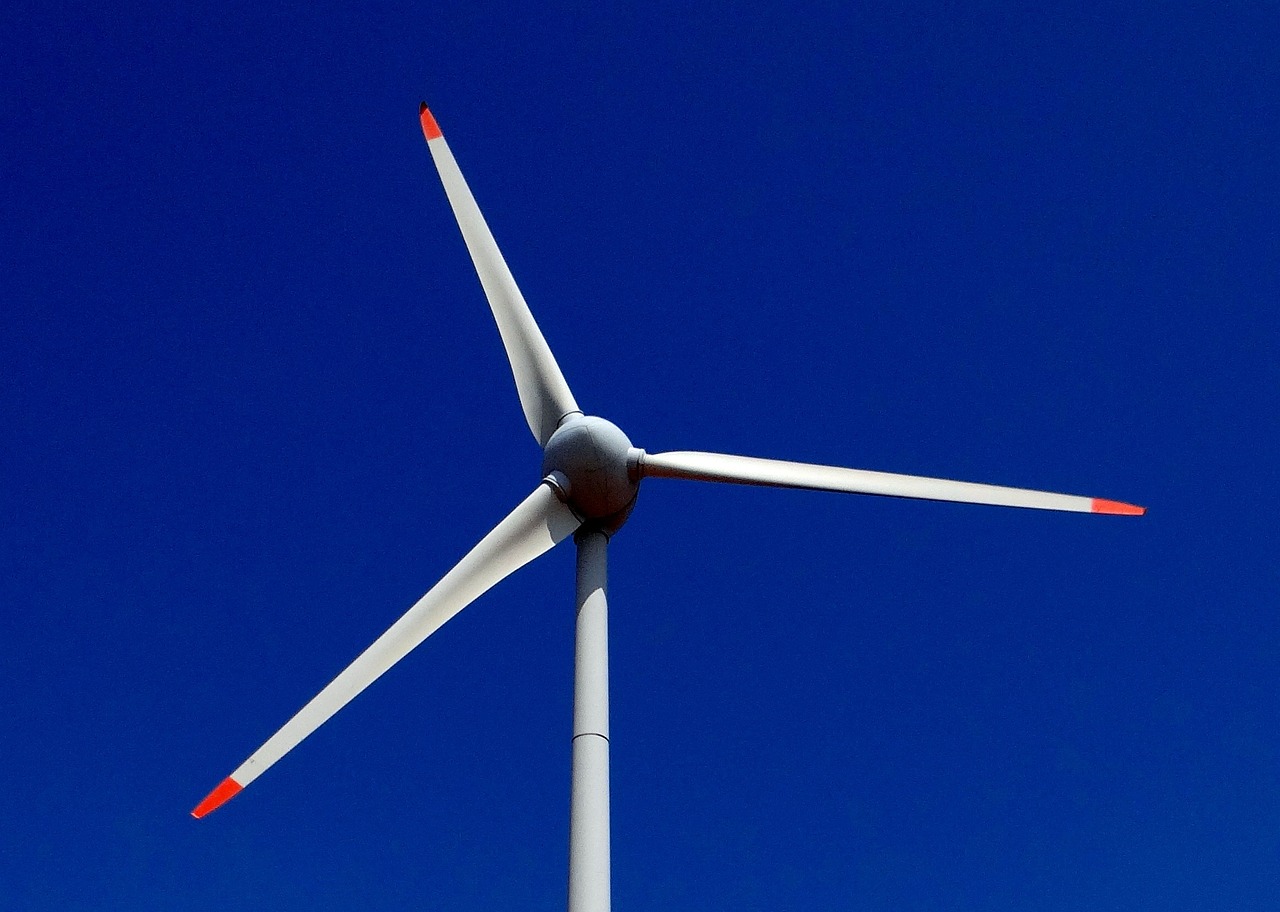
Restoring Power and Resources
Understanding the process of power restoration can significantly ease the anxiety that often accompanies unexpected outages. When the lights go out, it can feel like the world has come to a standstill. However, knowing what to expect during the restoration process can help you stay calm and prepared. First and foremost, it's essential to familiarize yourself with your local utility companies. Each has its own protocols for addressing outages, which can vary based on the cause and extent of the disruption. For instance, severe weather might lead to widespread outages, while a minor equipment failure may only affect a few homes.
When a power outage occurs, utility companies typically prioritize restoring power based on the number of customers affected and the severity of the situation. This means that larger outages affecting hospitals, emergency services, and critical infrastructure are often addressed first. Understanding this hierarchy can help set realistic expectations about when power might be restored in your area. Remember, the goal of utility providers is to restore power as quickly and safely as possible.
In addition to knowing your utility provider's contact information, it’s beneficial to keep track of any updates they provide. Many companies have mobile apps or websites where you can report outages and get real-time updates on restoration efforts. This can save you time and help you stay informed without having to make a phone call, which might be busy during widespread outages.
Moreover, many communities offer resources and support during power outages. Local shelters, food banks, and assistance programs can provide vital help when you need it most. Here are some resources you might want to check out:
- Shelters: These can provide a safe place to stay if your home is too cold or unsafe.
- Food Banks: If you're running low on supplies, local food banks can offer assistance.
- Community Centers: Often serve as hubs for information and resources during emergencies.
Finally, it’s essential to have a plan in place for how you will cope during an extended power outage. This includes knowing where to find resources and support, as well as having a communication plan with family members. By staying informed and prepared, you can navigate the challenges of power outages with greater ease and confidence.
Q: How can I report a power outage?
A: You can report outages directly to your local utility provider via their website, mobile app, or by calling their customer service number. Make sure to have your account information handy for quicker assistance.
Q: What should I do if my power is out for an extended period?
A: If the power is out for more than a few hours, check on your emergency supplies, stay informed through local news or your utility provider's updates, and consider relocating to a shelter if necessary.
Q: Are there any resources for people with medical needs during a power outage?
A: Yes, many communities have programs specifically designed to assist individuals with medical needs. It's vital to register with your utility provider if you rely on medical equipment that requires electricity.
Q: How can I stay safe during a power outage?
A: Always use flashlights instead of candles to reduce fire risk, avoid using generators indoors due to carbon monoxide risks, and stay away from downed power lines.
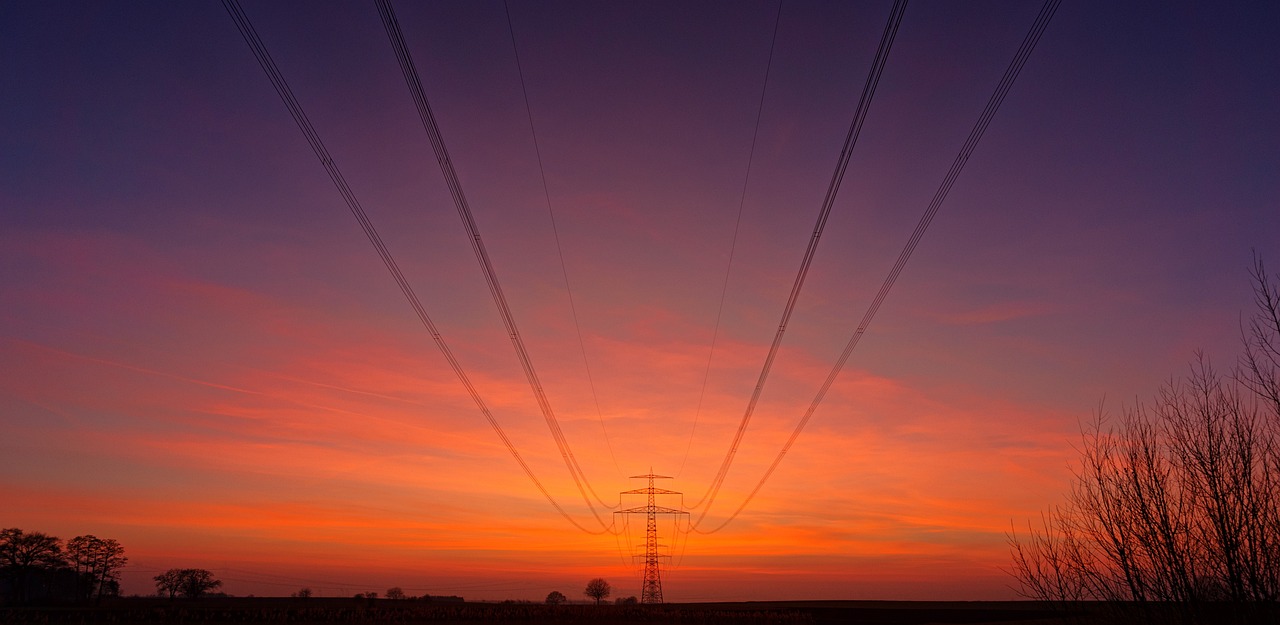
Contacting Utility Providers
When the lights go out, one of the first thoughts that cross your mind might be, "How do I get in touch with my utility provider?" This is a crucial step in managing a power outage, as reporting the issue promptly can help expedite the restoration process. Most utility companies have dedicated hotlines for outage reporting, and it's wise to have this number saved in your phone or written down in your emergency kit. Imagine being in a dark room, feeling the silence, and knowing that a simple phone call can bring back the light.
In addition to the outage reporting number, many utility providers offer online services and mobile apps that allow you to report outages, check the status of repairs, and receive updates. This can be particularly helpful if you prefer to avoid long wait times on the phone. Some companies even have text messaging services that will notify you when your power is restored, which can be a huge relief when you're unsure how long you’ll be in the dark.
Here are a few important tips to keep in mind when contacting your utility provider:
- Have Your Account Information Ready: When you call, be prepared to provide your account number, address, and any other identifying information. This helps the representative assist you more efficiently.
- Stay Calm and Patient: During widespread outages, call volumes can be high. Remain calm and patient, as it might take some time to get through.
- Utilize Social Media: Many utility companies now have a presence on social media platforms. You can often get quick updates from them through Twitter or Facebook.
Lastly, don't forget to check your utility provider’s website for any announcements related to outages. They often post real-time updates about the situation, including estimated restoration times, which can help you plan accordingly. Remember, being proactive and informed not only helps you but also aids the utility companies in managing the situation more effectively.
Q: How do I report a power outage?
A: You can report a power outage by calling your utility provider's dedicated outage hotline or using their online services or mobile app.
Q: What information do I need to provide when reporting an outage?
A: Be ready to provide your account number, address, and any other identifying information that can help the utility representative assist you quickly.
Q: How can I stay updated on the status of the outage?
A: Many utility companies provide updates through their websites, social media channels, and mobile apps. You can also sign up for text alerts if they offer that service.
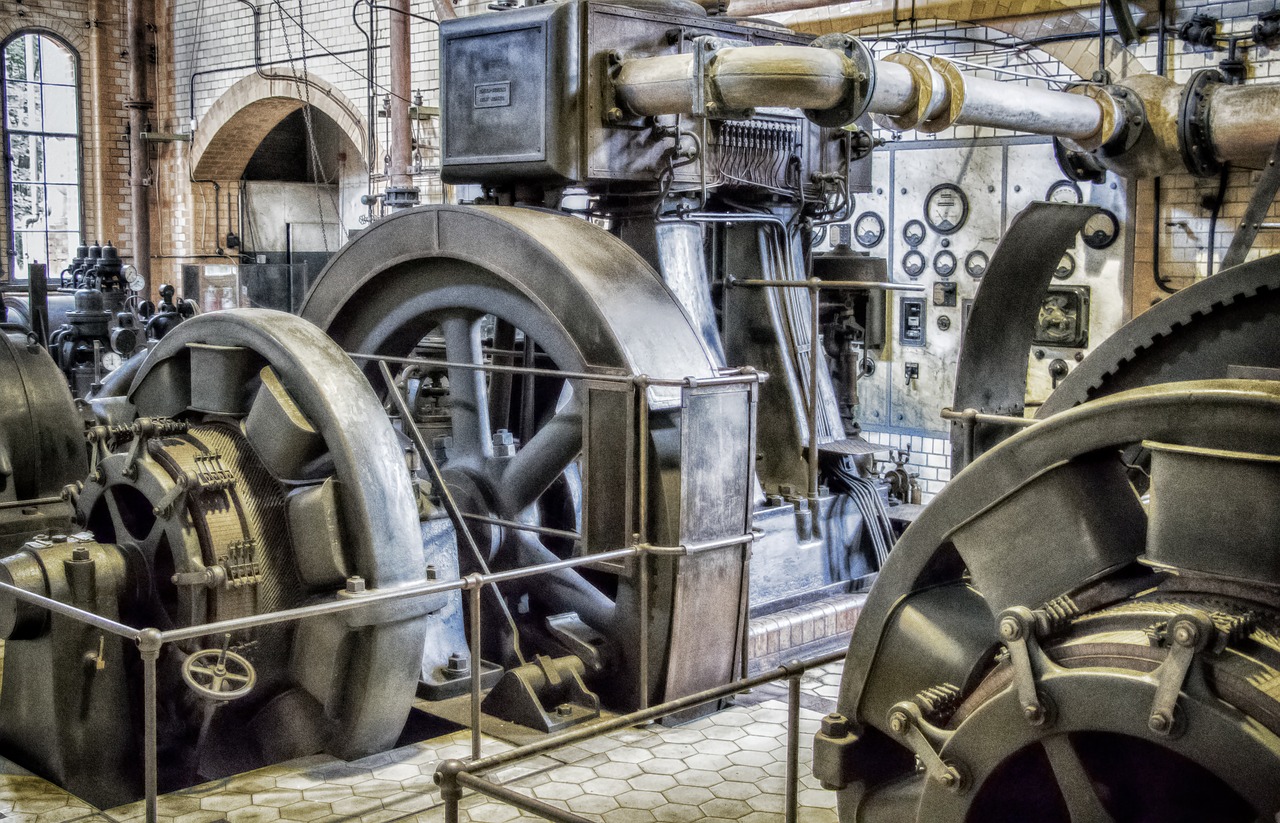
Community Resources and Support
When the lights go out and the world seems to pause, it’s easy to feel isolated and overwhelmed. However, remember that you’re not alone! Many communities have established resources and support systems to help residents during power outages. These resources can be a lifeline, providing everything from food and shelter to information and emotional support.
First and foremost, it’s crucial to connect with your local emergency management office. They often have up-to-date information regarding outages and can direct you to available resources. Many cities also maintain a list of community centers that serve as emergency shelters during extended outages, where you can find warmth, food, and even a friendly face. Consider visiting your community's website or social media pages to stay informed about these resources.
In addition to shelters, many organizations and non-profits offer assistance during emergencies. For instance, local food banks often extend their services during outages, ensuring that families have access to essential supplies. These food banks may provide pre-packaged meals or canned goods that require no cooking—perfect for times when you can't use your stove. Here’s a quick look at some potential resources:
| Resource | Type of Support | Contact Information |
|---|---|---|
| Local Emergency Management Office | Information & Coordination | [Insert Phone Number] |
| Community Shelter | Temporary Housing | [Insert Phone Number] |
| Food Bank | Food Assistance | [Insert Phone Number] |
| Local Red Cross | Emergency Services | [Insert Phone Number] |
Furthermore, many communities have volunteer organizations that mobilize during emergencies. These groups can provide help with everything from delivering food to checking in on vulnerable neighbors. If you’re able, consider volunteering your time to help those in need. Not only does it strengthen community bonds, but it also empowers you to take action during stressful situations.
Lastly, don’t underestimate the power of social media. Many local agencies use platforms like Twitter and Facebook to share real-time updates and resources during outages. Joining local community groups can also connect you with neighbors who may have information or resources to share. Remember, during power outages, communication is key, and the more informed you are, the better prepared you'll be.
In conclusion, when the unexpected happens, your community can be a source of strength and support. By familiarizing yourself with local resources and staying connected, you can navigate power outages with greater ease and confidence. So, take a moment to reach out, ask questions, and be part of a supportive network. After all, we’re all in this together!
- What should I do if I experience a power outage?
First, check your circuit breakers and ensure the outage isn't limited to your home. If the power is out in your area, report it to your utility provider and stay tuned for updates.
- How can I prepare my family for a power outage?
Assemble an emergency kit with food, water, flashlights, and other essentials. Discuss your plan with family members so everyone knows what to do.
- Are there community resources available during a power outage?
Yes! Many communities have shelters, food banks, and volunteer organizations that provide support during outages. Check with your local emergency management office for more information.
- How can I stay informed during a power outage?
Use battery-operated radios or mobile apps to receive updates from local authorities. Social media can also be a valuable resource for real-time information.
Frequently Asked Questions
- What should I include in my emergency kit for a power outage?
Your emergency kit should have essential supplies like non-perishable food, bottled water, flashlights, batteries, a first aid kit, and any necessary medications. Don't forget a manual can opener and a portable phone charger!
- How much food and water should I store for a power outage?
It's recommended to have at least a three-day supply of water—about one gallon per person per day—and enough non-perishable food items that require minimal preparation. Think canned goods, dried fruits, and energy bars!
- What safety precautions should I take during a power outage?
During a power outage, keep safety in mind. Avoid using candles to prevent fire hazards, and if you have a generator, use it outdoors to prevent carbon monoxide poisoning. Always treat downed power lines as live and dangerous.
- How can I stay informed about power outages in my area?
Stay updated by using battery-operated radios or mobile apps that provide alerts and updates from local authorities. This can help you stay ahead of the situation and plan accordingly.
- What should I do if I see a downed power line?
If you encounter a downed power line, keep a safe distance and treat it as if it’s live. Report it to the authorities immediately and never attempt to move or touch it yourself.
- How can I contact my utility provider during an outage?
Make sure to have your local utility provider's contact information handy. You can usually find this on their website or your previous bills. Reporting outages quickly can help speed up the restoration process.
- Are there community resources available during power outages?
Yes! Many communities have resources like shelters, food banks, and assistance programs to support residents during power outages. Check with local government websites or community centers for information.



















